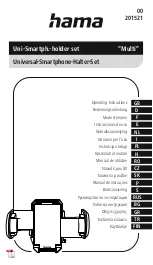
tion only in the camera mode „P“ and in the
flash mode „TTL“.
4.9 Synchronisation
Normal synchronisation
In normal synchronisation, the flash unit is trig-
gered at the beginning of the exposure time
(1
st
curtain synchronisation). Normal synchronisa-
tion is the standard mode on all cameras and is
suitable for most flash shots. No settings have to
be made on the flash unit nor is there any display
for this mode.
Second-curtain synchronisation
Synchronisation with the shutter’s second curtain
(SLOW 2 or REAR) is particularly advantageous
when shooting moving objects that have their own
source of light with a slow shutter speed (slower
than 1/30 sec). 2
nd
curtain synchronisation gives a
more realistic impression of movement because
the light streaks behind the light source instead of
building up in front of it – as is the case with
1
st
curtain synchronisation.
If 2
nd
curtain synchronisation is selected the flash
is not triggered at the moment the first shutter
curtain opens, but a fraction of a second before
the second shutter curtain is starting. If a slow
shutter speed has been chosen, or in the „bulb“
mode with the corresponding aperture, the exist-
ing ambient light level permits traces of moving
lights to be seen (e.g. light trails left by the lights
of a car). As the flash is fired right before the end
of the exposure time, the moving subject is frozen
at the end of the light trail. The effect thus achie-
ved seems more natural to the perception of the
25
ķ
















































